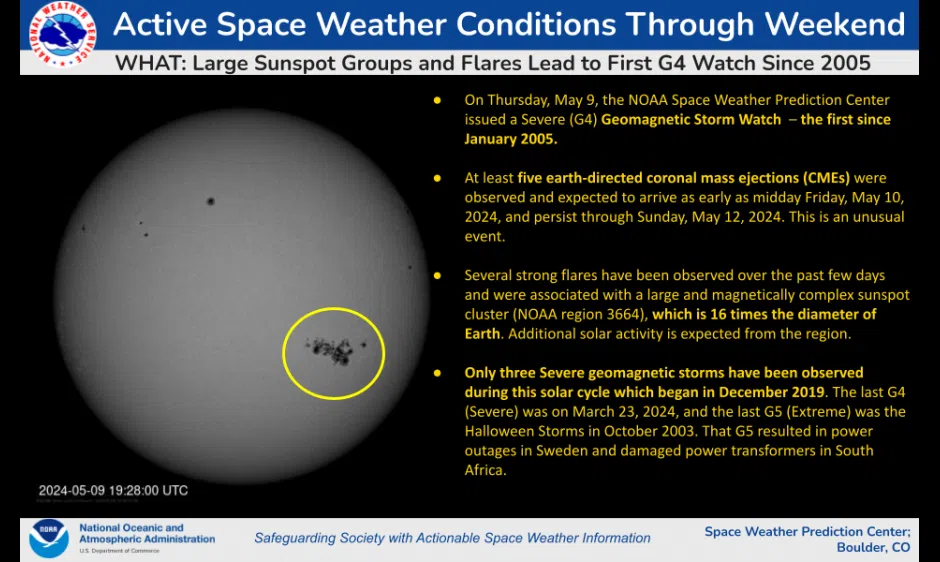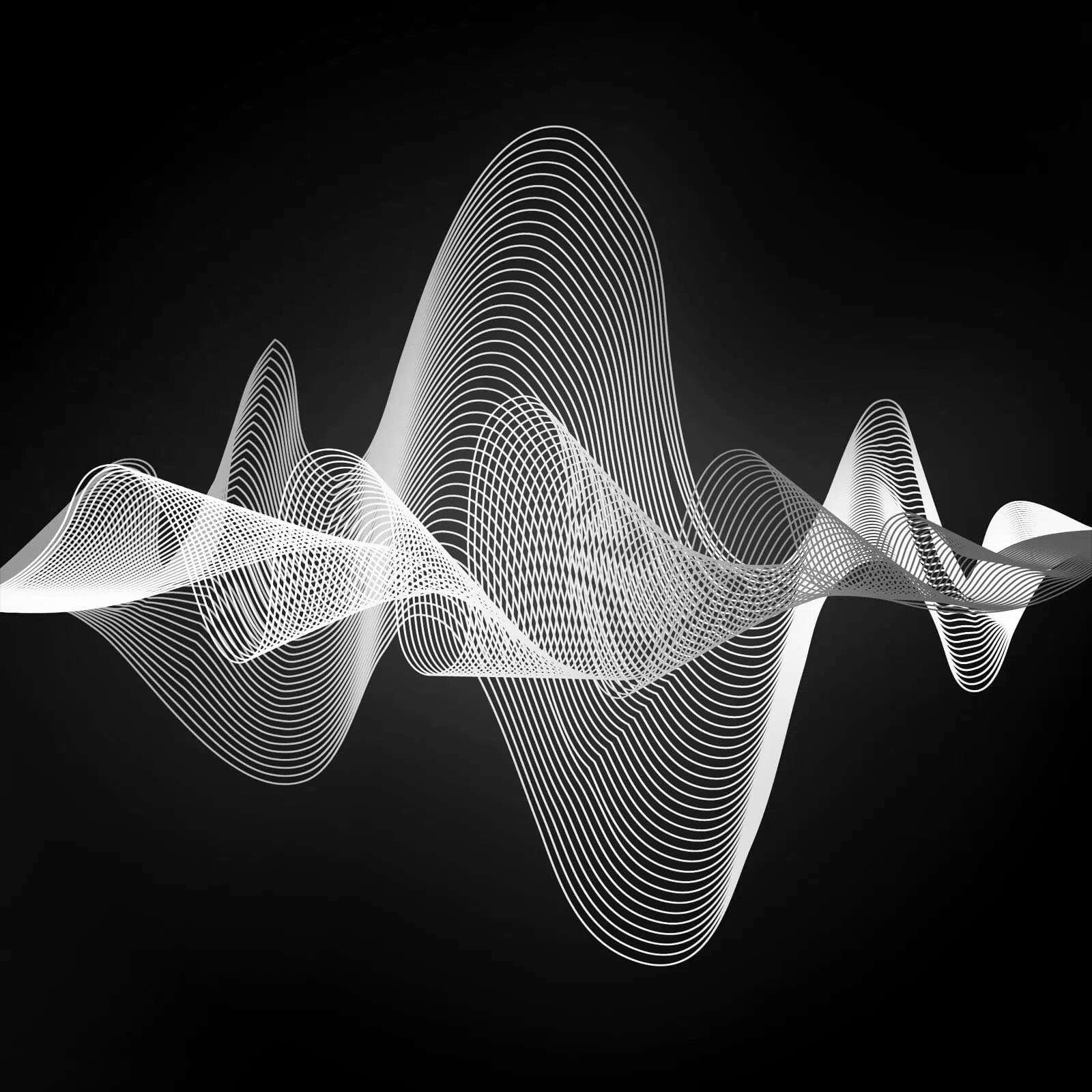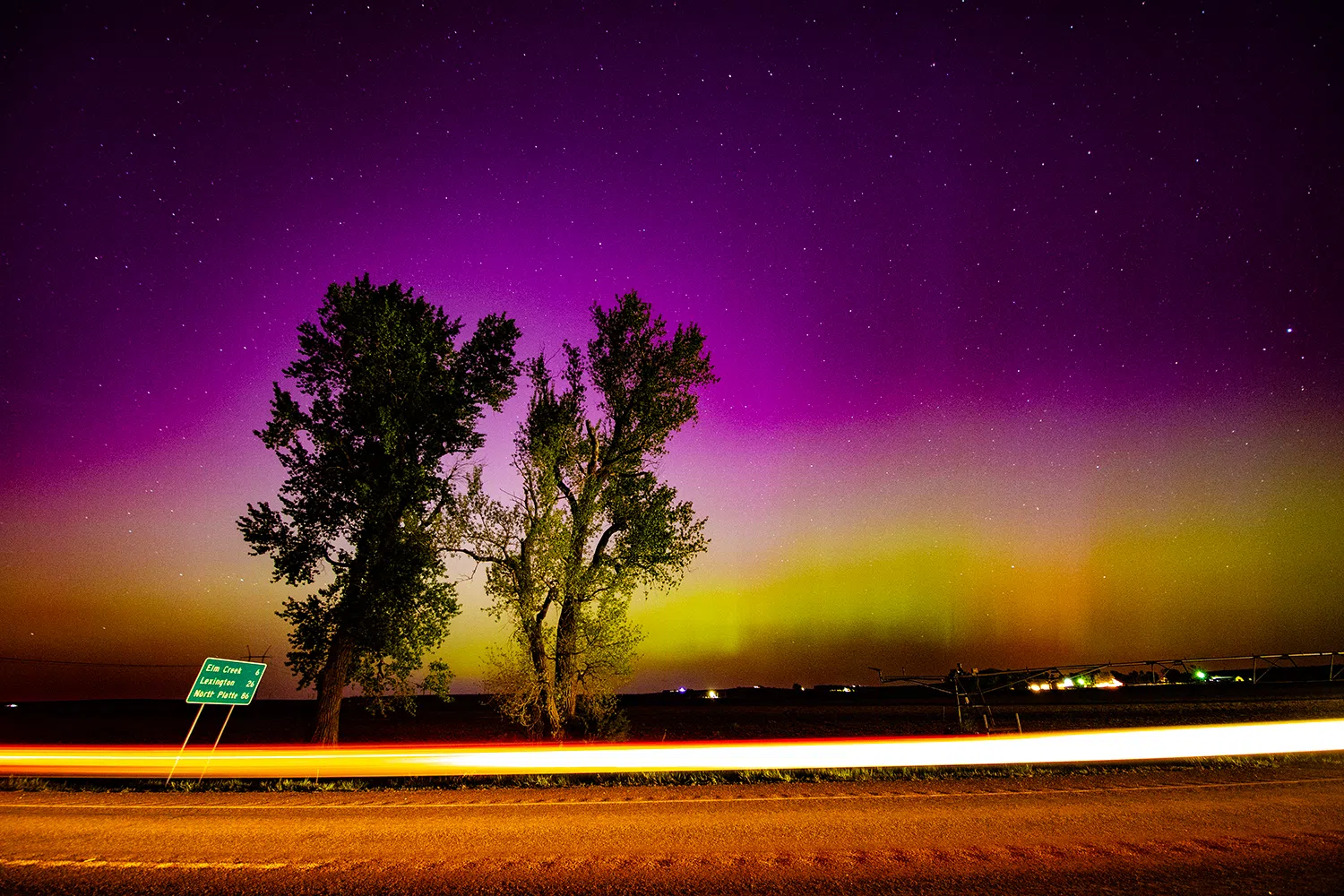BUFFALO CO. — Does space weather count as fodder to include in a weather blog? The editor, myself, is giving me the thumbs up so here we go.
I will be honest, while I find astronomy fascinating, I know very little about it. As compared to weather here on Earth, where I would say I know enough to be dangerous.
On Thursday, May 9 the National Oceanic and Atmospheric Administration (NOAA) Space Weather Prediction Center issued a Severe (G4) Geomagnetic Storm Watch, the first since January 2005.
Prepare for an information dump. Apologies, as a reporter I am a slave to context.
A geomagnetic storm is a temporary disturbance of the Earth’s magnetosphere caused by a solar wind shock wave. The disturbance that drives the magnetic storm may be a solar coronal mass ejection (CME).
A CME is a significant ejection of magnetic field and accompanying plasma mass from the Sun’s corona into the heliosphere.
At least five Earth directed coronal mass ejections were observed from the Sun and expected to arrive as early as midday Friday, May 10 and persist through Sunday, May 12.
Several strong flares have been observed over the past few days and were associated with a large magnetically complex sunspot cluster, which is 16 times the diameter of Earth. Additional solar activity is expected from this region, NOAA Space Weather Prediction Center stated.
The last G5, extreme, was the Halloween space storms of October 2003, this resulted in power outages in Sweden and damaged power transformers in South Africa.
“This is an unusual event,” NOAA Space Weather Prediction Center noted.
So, essentially Earth was going to be downstream of several CME’s and the effect was going to be that the aurora borealis, commonly known as the northern lights, could be visible at latitudes far more southern than usual.
Auroras are the result of disturbances in the Earth’s magnetosphere caused by the solar wind.
The aurora borealis is visible commonly from areas around the Arctic such as Alaska, the Canadian Territories, Iceland, Greenland, Norway, Sweden, Finland, Scotland, and Siberia.
On rare occasions the aurora borealis can be seen as far south as the Mediterranean and the southern states of the US – that’s exactly what was happening on Friday night.
With this space forecast in mind, but knowing that the CME’s arrival near Earth could be mistimed with nightfall across the central United States, I held my ground at my home as darkness began to fall.
Mind you, I have never witnessed the aurora borealis in my life, so I wasn’t exactly sure what to expect. I have dabbled in astrophotography, taking pictures of star constellations and the Milky Way, but this was going to be a first in every sense.
Social media posts indicated that the auroras were plainly visible in Europe where night had already fallen, which encouraged me that the same may happen over the United States.
After sunset, I kept poking my head out and looking north, waiting for the last shreds of daylight to fade.
Finally, darkness had fallen enough that I went outside and let my eyes adjust so I could get a better look.
The view did not disappoint.
Faintly visible to the naked eye was what seemed to be a curtain of pinkish hue, not on the edge of the horizon, but seemingly taking up a third of the northern sky.
I had my camera prepared on a tripod and took a two second exposure to fully draw out the colors. When my camera finished processing the image and it appeared on the back LCD, my jaw dropped.
No longer faint, the image showed faint columns of pink verging into purple, covering the sky above the horizon.
I ran inside the house and hurried my partner, Emaly, outside so she too could take in what I was seeing.
As we watched and I took several long exposure shots, columns of light would appear, shimmer and then fade, only to be replaced by others. At one point the colors higher up shifted into deep purple, while near the bottom, a greenish hue replaced the pink.
I shifted to the field just north of my house and put the rear end of the irrigation pivot in frame as a foreground to balance against the background of the auroras.
Moving down to my favorite hometown foreground subjects, two trees along Highway 30. I set up so the traffic lights would be in streaks along the road while the aurora filled the top of the frame.
Watching the lights grow in intensity, then fade, only to glow brighter again was stunning.
It wasn’t just central Nebraska that was watching, as far south as Oklahoma City could see the lights as clearly as we could. Farther north in Canada, the auroras were directly overhead of those observing.
I had to laugh when I checked social media, I follow several storm chasers and it seemed we were all doing the same thing – standing out in the dark in rural areas capturing photos of a lifetime.
The views Friday evening were more than I could have hoped for, truly a unique experience and just another reason I cannot get enough of photographing the sky.
Editor’s Note: My name is Brian Neben and this is my sixth year as storm spotter and chaser. I write a personal column about each outing, as it helps to collect my thoughts and I have felt like people enjoy reading about my success or failures perusing this rather niche hobby.




